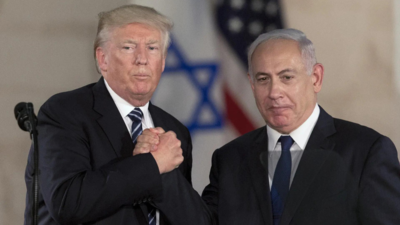Israeli Prime Minister Benjamin Netanyahu on Sunday said that military pressure on Hamas is yielding results, with “cracks” beginning to emerge in negotiations. He reaffirmed Israel’s position that Hamas must lay down its arms and that its leaders would be allowed to leave Gaza as part of a broader plan to ensure security and facilitate voluntary immigration under the Trump plan.
Speaking at a cabinet meeting, Netanyahu asserted, “Military pressure is working. It crushes Hamas’s military and governmental capabilities while creating conditions for the release of our hostages.” He noted that despite Hamas’s refusal to agree to Israel’s demands for a prolonged ceasefire, negotiations were ongoing. “We see that there are suddenly cracks,” he added.
Netanyahu reiterated that Israel was willing to engage in discussions for the final stage of a deal. “We are ready,” he said. “Hamas will lay down its weapons. Its leaders will be allowed to leave. We will ensure general security in the Gaza Strip and enable the implementation of the Trump plan, the voluntary immigration plan.”
Hamas, meanwhile, announced that it had accepted a ceasefire proposal mediated by Egypt and Qatar, but Israel countered with its own terms in coordination with the United States. According to reports, Hamas had agreed to release five hostages, including an American-Israeli citizen, in exchange for Israel allowing aid into Gaza and pausing hostilities. However, Israel insists on further concessions, including Hamas’s complete disarmament and removal from power.
The conflict reignited after Israel ended a previous ceasefire, citing Hamas’s failure to accept revised terms. Israeli airstrikes have since intensified, with operations expanding into southern Gaza’s Rafah region. Netanyahu defended the escalation, stating, “We are committed to bringing back the hostages, and military and diplomatic pressure is the only thing that has worked.”
The war, which began after Hamas’s October 7 attack that killed 1,200 people and saw 251 hostages taken, has resulted in over 50,000 Palestinian deaths, according to Gaza’s Health Ministry. The devastation has left much of Gaza in ruins, with residents struggling to survive amidst dwindling resources. “There is no Eid,” said Saed al-Kourd, reflecting the grim reality as Palestinians marked the Muslim holiday amid ongoing bombardment.
Netanyahu also acknowledged the role of international allies, particularly the United States, which recently conducted strikes against Iran-backed Houthis in Yemen. “We always value alliances,” he said. “We have an alliance with the greatest power in the world, and it stands behind us without reservation.”
What is the Trump plan?
US President Donald Trump has on numerous occasions outlined his vision for Gaza, proposing a long-term “ownership position” once the war between Israel and Hamas ends. In an interview with Fox News, he described plans to rebuild the war-torn enclave, stating that “great people” in the Middle East could help transform it into a “beautiful and safe community.”
Trump suggested relocating Palestinians to “beautiful areas” elsewhere in the region while Gaza is reconstructed. “There’s practically no building that’s livable in the whole Gaza Strip. I say we go in, we knock them all down… No more Hamas. There’s nobody there,” he said.
He further elaborated on his vision, adding, “We’ll build beautiful communities for the 1.9 million people… safe communities a little bit away from where they are, where all of this danger is. In the meantime, I would own this. Think of it as a real estate development for the future.”




